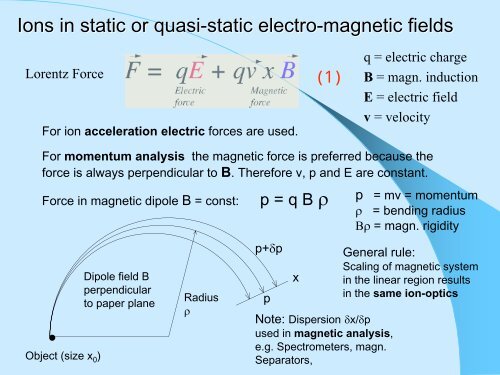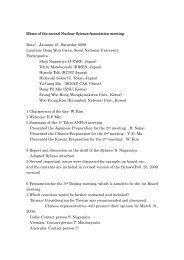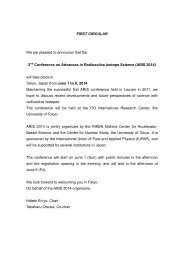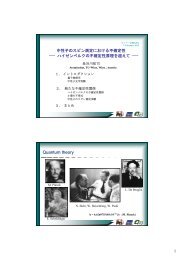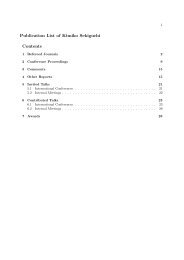An Introduction to the Ion-Optics of Magnet Spectrometers
An Introduction to the Ion-Optics of Magnet Spectrometers
An Introduction to the Ion-Optics of Magnet Spectrometers
You also want an ePaper? Increase the reach of your titles
YUMPU automatically turns print PDFs into web optimized ePapers that Google loves.
<strong>Ion</strong>s in static or quasi-static static electro-magnetic fields<br />
Lorentz Force<br />
For ion acceleration electric forces are used.<br />
(1)<br />
q = electric charge<br />
B = magn. induction<br />
E = electric field<br />
v = velocity<br />
For momentum analysis <strong>the</strong> magnetic force is preferred because <strong>the</strong><br />
force is always perpendicular <strong>to</strong> B. Therefore v, p and E are constant.<br />
Force in magnetic dipole B = const: p = q B ρ<br />
p = mv = momentum<br />
Dipole field B<br />
perpendicular<br />
.<br />
<strong>to</strong> paper plane<br />
Object (size x 0 )<br />
Radius<br />
ρ<br />
p+δp<br />
p<br />
x<br />
Note: Dispersion δx/δp<br />
used in magnetic analysis,<br />
e.g. <strong>Spectrometers</strong>, magn.<br />
Separa<strong>to</strong>rs,<br />
ρ = bending radius<br />
Βρ = magn. rigidity<br />
General rule:<br />
Scaling <strong>of</strong> magnetic system<br />
in <strong>the</strong> linear region results<br />
in <strong>the</strong> same ion-optics


